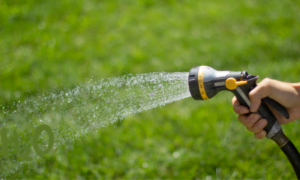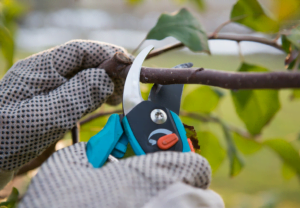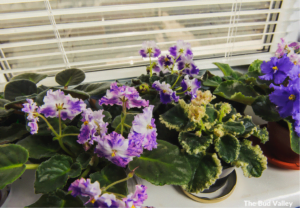Currently, I have 10 Saintpaulia houseplants. I have been researching these plants since 2016, and I have gained special knowledge and experience about them. In today’s blog, I will try to present all the detailed information about this plant. First, I will tell you about the history of this plant because its history is very interesting and you need to know it.

History of African Violet (Saintpaulia)
| Height | 6’’-2’ (15c-60cm) |
| Spread | 6’’-2’ (15c-60cm) |
| Maintenance | Average |
| Water Needs | Average |
| Soil Type | Sand |
| Soil pH | Acid, Neutral |
| Soil Drainage | Moist but Well-Drained |
| Garden Uses | Patio, And Containers |
| Characteristics | Showy, Evergreen |

The plant was first discovered by Baron von St. Paul in 1892 when it was sent to Hermann Wendland at the Royal Botanic Garden in Berlin and named Saintpaulia ionantha after his family. This plant was very difficult to cultivate and care for at home, which is why it did not become very popular in the beginning. However, around 1925, Armacost and Royston, a Los Angeles nursery, recognized the plant’s potential and began developing new varieties. They released their first creation, Blue Boy, which was quite different and could cope happily with domestic conditions. It became increasingly popular from the 1930s onwards, and gradually new varieties were created and cross-bred. Over the years, a variety of colors and different leaf shapes came on the market. Still, it did not become trendy in Europe until the end of World War II, when it was known as African Violet Fever and became very popular throughout the 1960s and 1970s in nations like the United Kingdom
African Violet Care Guide In-Home
Light

Sunlight plays a significant role for plants. No plant can survive long without sunlight, but some plants or trees placed in direct sunlight are likely to die. Therefore, this plant should never be placed in direct sunlight. Instead, place it where it will receive indirect sunlight, such as a shaded area.
Watering

This plant needs water, but it should be given in moderation because excess water can cause fungus to appear on the leaves or the plant. Therefore, before watering, the soil at the base of the plant must be checked to see if it is dry. If the soil is dry, then watering the plant is appropriate. Care must be taken while watering, as overwatering is not good for the plant. Additionally, the leaves of the plant must always be kept clean.
Humidity

This plant needs a lot of moisture, but too much can be harmful. Keep the humidity level right and avoid over-wetting the leaves, as this can damage them.
Feeding
Every plant needs food, but this plant particularly thrives on food high in potash. If the food you give this plant contains potash, it will do very well. However, if this plant does not get enough light and air, then this food should be avoided.
Temperature

Temperature is a very important factor because both high and very low temperatures can be detrimental to a plant. Excessive temperatures and very low temperatures can kill a plant. Therefore, it is essential to know the right temperature for this plant. The average temperature for this plant is 15°C – 21°C (60°F – 72°F). Keeping the temperature above 15°C (60°F) in winter is crucial to prevent it from suffering.
Repotting
Repotting is beneficial for a single plant, but repeated repotting of a mature plant reduces its chances of flowering. The ideal time to repot is in spring or early summer, as this will yield the best results. Repotting once every two to three years works well.
Propagation
Division
One of the simplest ways to propagate African violets is through division.
Gently take the plant out of its pot and split the root ball into smaller pieces.
Ensure each division has its own set of roots and leaves before replanting them in individual pots with fresh soil.
Leaf Cuttings

Another popular method of propagation is through leaf cuttings.
Select a healthy leaf from the parent plant and make a clean cut near the stem.
Place the leaf in a moist, well-draining medium and watch as new plantlets emerge from the cut edge.
Stem Cuttings

You can also propagate African violets using stem cuttings. Make a clean incision directly below a leaf node on a healthy stem that has a few leaves. Plant the cutting in a soilless mix, keep it moist, and soon you’ll have a new plant to nurture.
Water Propagation
For a fun twist, try water propagation with your African violets. Take a healthy leaf cutting and place it in a container with water, ensuring the stem is submerged. After a few weeks, roots will start to form, signaling that it’s time to transfer the cutting to soil.
Speed of Growth
Generally, this plant slows down in winter, and when it matures, its growth vigor is reduced as its leaves are busy producing flowers, which leads to odd leaves and significantly reduces its growth.
Height / Spread
These plants are very small, with a typical height of about 12.5 cm or 5 inches, spreading up to a maximum of 25 cm or 10 inches. Blue African Violet Fulsacrus.
Flowers

This plant produces flowers of various colors such as pink, purple, blue, red, single, and giant, etc. The flowers available from this plant will take at least 6 months to start flowering.
Is The African Violet Poisonous?
Many people think that this plant is poisonous to humans, dogs, and cats, but this is a complete misconception. This plant is not at all poisonous to humans, cats, and dogs.
African Violet Problems
Treatments for Yellowing Leaves and Other Symptoms of Sickness: Overwatering, low light, or nutrient insufficiency may cause African violets to have yellowing leaves. Treatments for yellowing leaves and other symptoms such as wilting may include ensuring that the plant does not stand in water, receiving sufficient light intake, and applying balanced fertilizer specifically created for African violets. Root Rot and Other Symptoms of the Sickness: African violet root rot may be caused by overwatering and poor drainage, resulting in an unhealthy plant.
To prevent root rot, a well-draining mix must be utilized, and the plant should be watered once the top inch of soil is dry. Pests: Spider mites, aphids, and mealybugs are the most prevalent pests that may infect African violets. Pest infestations: solutions: Regularly check the plant for visible signs of pests and control them through natural means or insecticidal soap. Flower Bud Blast: Causes: When African violet buds fail to open and fall off prematurely, they are said to have bud blast; and maintain a steady supply of water and nutrients. Moreover, maintain consistent growth conditions, such as temperature and humidity levels. Crown Rot: Causes: A fungal disease that infects the basal plant and can kill it if no proper control measures are taken. Solutions: Prevent the disease from occurring by avoiding getting water on the plant leaves and crown. Adequate air circulation around the African violet must also be maintained.
In this blog, I have endeavored to share the success from my personal experience and provide detailed guidance on caring for this plant. By following these instructions diligently, you can effectively maintain this plant without encountering any issues. Moreover, if you aspire to commercialize this tree, you can certainly cultivate it using this process. Therefore, I hope that by carefully reading this blog, you will acquire comprehensive knowledge about this tree and find it beneficial. I wish you success in whatever you do.

